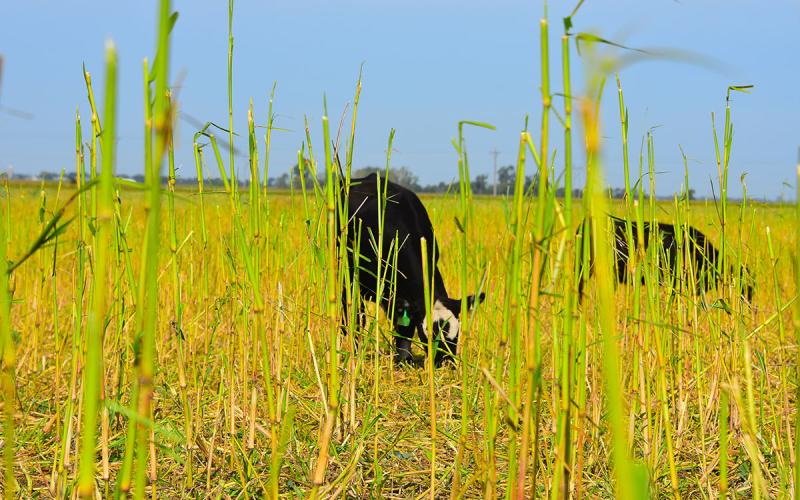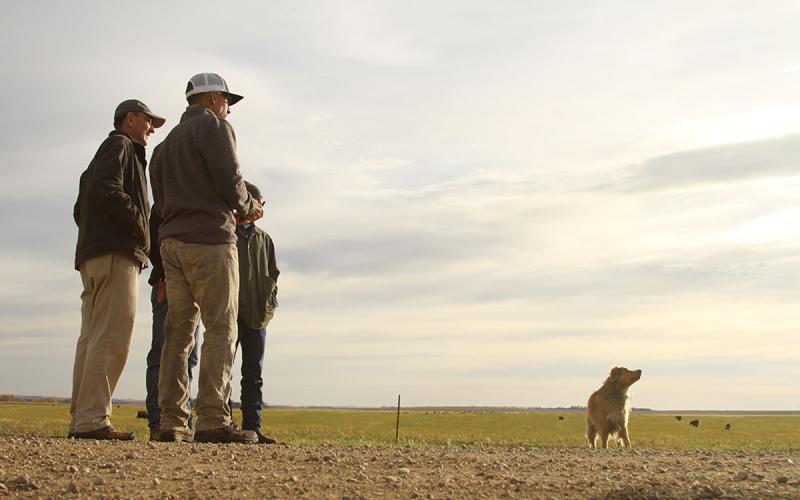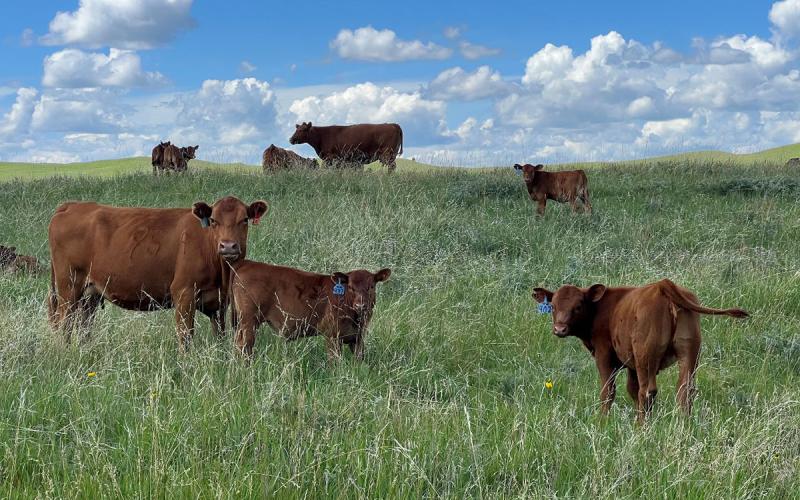Dry springs mean management changes for both farmers and ranchers as they plan for summer. For farmers, previously planned crop rotations may need to be evaluated, and for ranchers, pasture turn-out date and stocking rate can change based on moisture and grass growing conditions. Many factors should be taken into consideration, and here we address a few for both farmers and ranchers.
Farmers

Crop Grazing
Evaluate winter annuals for stand emergence and uniformity. Winter wheat, winter triticale, and cereal rye are all forages that could be grazed by cattle if deemed a failure, but always check with your crop insurance agent before making any alternate harvest decisions if crops were insured. Don’t have cattle? The South Dakota Grazing Exchange can pair farmers and ranchers together to find animals for grazing before planting a second crop. This practice should be mutually beneficial to the farmers, who will utilize less soil fertility, and the rancher who can delay pasture turn-out. If it rains while livestock are grazing, consider decreasing stocking rate or increasing grazing area to limit surface disturbance.
Corn and soybean field rotations
Insurance can cover some of the risk in these row crop fields, but what other options are available for drought-hardy crops? Silage corn hybrids, canola, hay millets, forage sorghum, and sudan hybrids are a few examples of alternative crops that can be evaluated with a marketing plan to calculate profitability compared to the planned cash crop. Custom grazing or haying of these forages is an option for farmers to collect some cash flow from ranchers needing to rest pastures or who are in need of more feed inventory.
Herbicide Carryover
Does your previous herbicide usage prevent you from planting a forage crop into a rotation? Visit with your agronomist, SDSU Extension Field Specialist, or view this Herbicide Rotation Restrictions resource for considerations regarding herbicide carry-over.
Ranchers

Alter turn-out date
Determine current herd inventory and current grass growth status. With moisture conditions behind since last fall, a reduced stocking rate plan or decreased grazing days are two options that the SDSU Extension Grazing Calculator can help calculate before turning out.
Grass Species
Next, what types of grass species are present in pastures and rangelands? Cool-season species experience a majority of forage growth earlier in the season when conditions are cool and moist and often again in the fall if conditions are favorable. In contrast, warm-season species will put on growth later in the season when conditions are hotter and drier. Regardless, if plants are grazed too early, production for those pastures can be significantly reduced for the remainder of the growing season. To check on this, you can use SDSU Extension’s South Dakota Grazing Readiness Spring Turnout Map.
Cool-season introduced species (smooth bromegrass, crested wheatgrass, etc.) should be in a minimum of 3-leaf stage prior to grazing, which occurs around 400 to 500 growing degree days (GDD). Native cool-season species (western wheatgrass, Junegrass, needlegrass, etc.) should be in a 3 to 3.5 leaf stage prior to grazing, which occurs around 1,000 to 1,200 GDD. Native warm-season species (blue grama, big bluestem, Indiangrass, etc.) should be in a 3.5 to 4-leaf stage prior to grazing, which occurs around 1,200 to 1,500 GDD. Find GDD in your region by visiting the South Dakota Mesonet.
Grazing Strategy
Rotational grazing strategies are a way to help intentionally manage the rest and recovery periods on pastures. Additionally, rotational grazing can improve grazing efficiency on the forage that is available. Regardless of grazing strategy, given the current dry soil conditions, it is critical to avoid grazing too early. Depending on rainfall and forage growth this season, producers should also plan to pull livestock off pastures early to protect growth and recovery for next year’s season. If pastures are pushed too hard in drought conditions, it could take multiple years of ‘normal’ conditions for recovery to occur.
Alternative Grazing
As mentioned above, if there is crop ground available for planting early spring or mid-summer grazing annuals, this will allow temporary pasture reprieve. Annual forages can also be planted into areas where a fall seeding of perennial grass is planned to cover the bare soil this summer. Drilling annual forages into failing alfalfa or overgrazed calving pastures may increase forage options in the short term. Long term strategies to overseed native seed mixes into these stands will promote recovery and introduce new plant varieties. Evaluation of nutrients, nitrates, fence, and water availability is needed before enacting these grazing systems.
Water Availability
Is an alternative water source available, or can above-ground piping be used if dams dry up? All water sources should be tested for quality before turning cattle out to graze. SDSU Extension Regional and county offices have meters to test water and well testing kits available for sending samples in for further evaluation. See our Feed & Water Testing Laboratories resource to learn more. If another water source is available, shallow water should be fenced off for livestock safety.
Culling Strategies
If pastures will not support all your animals, what can be liquidated before going to grass? Which animals will be more cost effective to feed versus graze if feed inventory is available? Shortened breeding seasons and early weaning are ways to stretch pastures, but they will impact herd management and feed inventories respectively. However, one should also evaluate if it is more valuable to sell cow/calf pairs early, allowing a new owner to apply their own breeding plans versus selling already-bred animals in late summer. Try using Iowa State University’s Ag Decision Maker to learn more.
Destocking herds or changing planting rotations are not always easy decisions. Benefits can come from being proactive if drought persists. SDSU Extension Experts are all readily available to help adjust crop and grazing plans as needed.
Additional Resources
- Annual Cover Crop Options for Grazing in the Northern Plains, NDSU Extension.
- Cereal Rye, Winter Triticale or Winter Wheat: Which is Best for Early, University of Nebraska-Lincoln.
- Grazing Rates: What Is a Fair Payment?, Practical Farmers of Iowa.
- Biologically Effective Grazing Management Reduces the Detrimental Effects from Drought Conditions on Grasslands, NDSU Extension.
- Farm Practices That Improve Soil Health: Integrated Crop-Livestock Systems, SDSU Extension.

